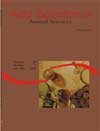<b>Culture systems for freshwater angelfish (<em>Pterophyllum scalare</em>)</b> - DOI: 10.4025/actascianimsci.v30i4.685
Keywords:
freshwater prawn, hapas, polyculture, aquarium fish, intensive system, semi-intensive system.
Abstract
The present study aimed to compare three production systems for freshwater angelfish: intensive indoor aquarium, semi-intensive greenhoused earth pond (monoculture) and greenhoused earth pond in polyculture with Amazon River prawn. Two stock densities were also tested: 1.6 and 3.2 fish 10 L-1. The experimental design was entirely randomized, in a 3x2 factorial scheme, with four replicates. ANOVA and Tukey’s test were used (α = 0.05). Fish from monoculture and polyculture systems showed over twice the weight gain, lower food consumption, better food conversion rate, bigger standard length and group uniformity than the fish maintained in aquariums. The aquarium system showed lower survival than monoculture. The stock density increase reduced the weight gain, standard length and body condition in all culture systems. The interaction analysis for biomass was statistical significance, showing no difference between the densities inside aquarium and increasing with density within mono and polyculture ponds. In polyculture, mean final weight and survival of Amazon river prawns were 1.66 g e 84.4%, respectively. Due to better growth results, density of 1.6 fish 10 L-1 is better than 3.2 fish 10 L-1. Freshwater angelfish can be produced better in hapas on monocultured or polycultured semi-intensive compared to indoor aquariums system.Downloads
Download data is not yet available.
Published
2009-03-05
How to Cite
Ribeiro, F. de A. S., Preto, B. de L., & Fernandes, J. B. K. (2009). <b>Culture systems for freshwater angelfish (<em>Pterophyllum scalare</em>)</b> - DOI: 10.4025/actascianimsci.v30i4.685. Acta Scientiarum. Animal Sciences, 30(4), 459-466. https://doi.org/10.4025/actascianimsci.v30i4.685
Issue
Section
Animal Production
DECLARATION OF ORIGINALITY AND COPYRIGHTS
- I Declare that current article is original and has not been submitted for publication, in part or in whole, to any other national or international journal.
The copyrights belong exclusively to the authors. Published content is licensed under Creative Commons Attribution 4.0 (CC BY 4.0) guidelines, which allows sharing (copy and distribution of the material in any medium or format) and adaptation (remix, transform, and build upon the material) for any purpose, even commercially, under the terms of attribution.
Read this link for further information on how to use CC BY 4.0 properly.
0.9
2019CiteScore
29th percentile
Powered by 








































